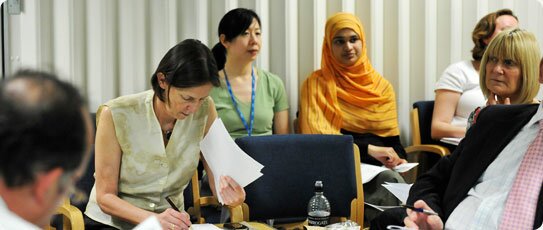
Royal National Orthopaedic Hospital NHS Trust
University College London Hospitals NHS Foundation Trust


latest news
>
Research at RNOH brings insight into the development of chondrosarcoma, and the development of Ollier disease and Maffucci Syndrome
08 May 2012 - Research at RNOH brings insight into the development of chondrosarcoma, and the development of Ollier disease and Maffucci Syndrome
Pathologists at RNOH identified the first recurrent genetic abnormality (mutations) in cartilaginous tumours. They found that close to 60% of chondrosarcomas have abnormalities in the gene isocitrate dehydrogenase type 1 and type 2 (IDH1 and IDH2). This mutant form of IDH1 and IDH2 results in the production of abnormal levels of a product 2-hydroxyglutarte (2HG) in the blood and urine. They are now following up this finding to see if this abnormal product (2HG) could be used to detect early recurrence of the disease. They and others are studying the abnormality to see if it could be the basis of developing a new treatment for this disease.
Patients with Ollier disease and Maffucci Syndrome have multiple cartilaginous tumours and patients with Maffucci Syndrome also have multipe haemangiomas (benign blood vessel tumours). In some patients the cartilaginous tumours become malignant (chondrosarcoma). Amary et al. also showed that the cause of Ollier disease and Maffucci syndrome is the abnormality in the IDH1 and IDH2 genes. The research offers an opportunity to develop new treatments for these syndromes.
Amary et al. IDH1 and IDH2 mutations are frequent events in central chondrosarcoma and central and periosteal chondromas but not in other mesenchymal tumours. J Pathol 2011; 224: 334–343
Amary et al. Ollier disease and Maffucci syndrome are caused by somatic mosaic mutations of IDH1 and IDH2. Nat Genet (2011) vol. 43 (12) pp. 1262-1265
Damato et al. IDH1 mutations are not found in cartilaginous tumours other than central and periosteal chondrosarcomas and enchondromas. Histopathology. 2012 Jan;60(2):363-5.

